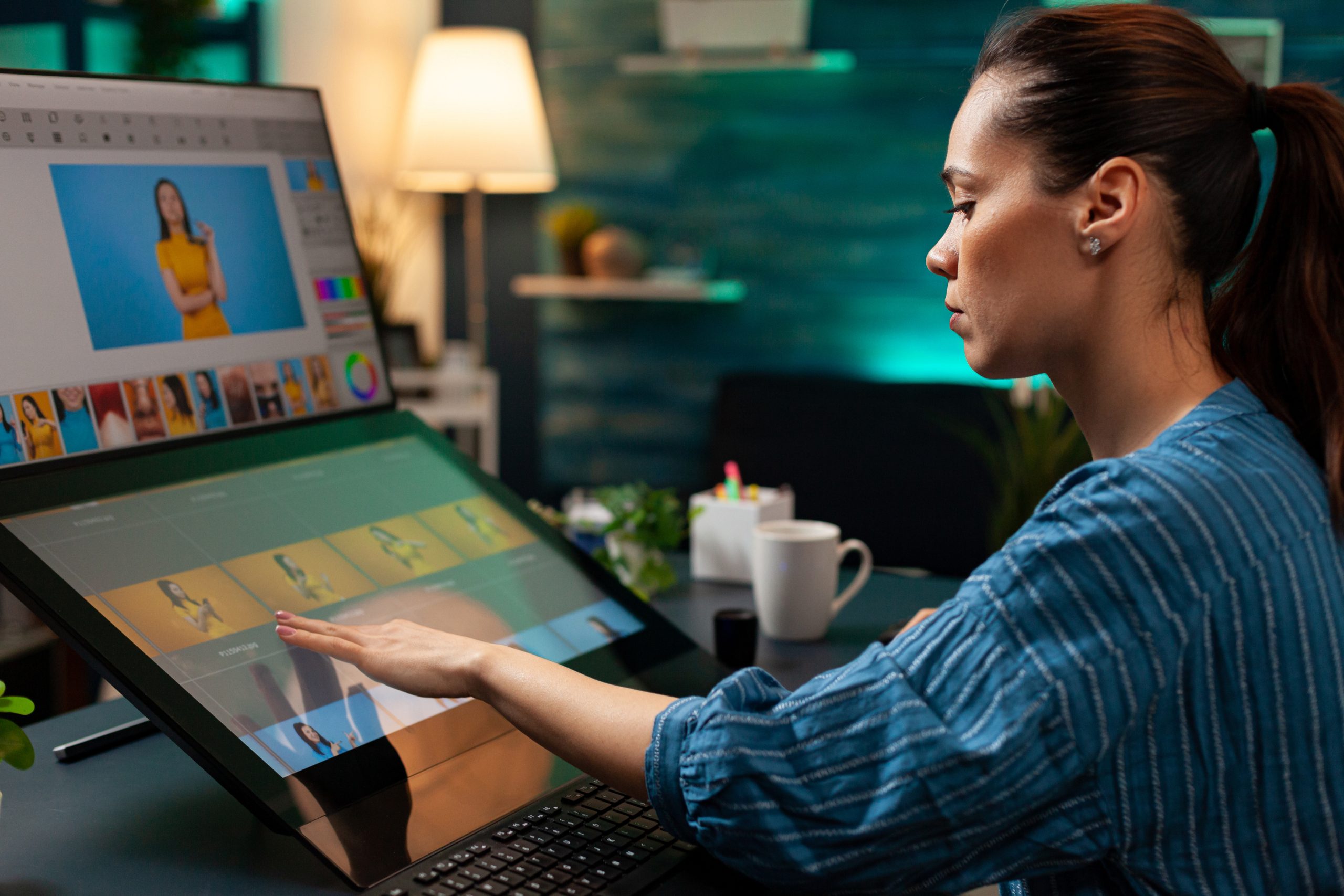If you’re navigating the digital art realm like a sailor charting unknown waters, you might wonder: Do digital artists lean towards Photoshop or Illustrator? The decision between these two behemoths of design software can be as intricate as a spider’s web, each offering unique capabilities and strengths. As you dip your toes into this discussion, you’ll uncover the nuances that influence the software choice, impacting not just the tools you use but also the creative possibilities that unfold before you.
Artist Preferences for Photoshop Vs. Illustrator
When it comes to digital art creation, artists often find themselves deliberating between the versatile tools of Photoshop and Illustrator to bring their visions to life. Artist preferences play a crucial role in determining which software suits their creative workflow best. Some artists lean towards Photoshop for its detailed photorealistic capabilities, making it ideal for intricate artistic techniques. On the other hand, Illustrator attracts artists who value scalability and clean vector graphics, enhancing their creative process. Understanding software limitations is vital as well; while Photoshop excels in pixel-based operations, Illustrator’s mathematical calculations offer speed advantages. This influences how artists utilize tools within each software to achieve their desired artistic outcomes. By considering these factors, artists can optimize their digital art creation process and choose the software that aligns with their preferences and artistic goals.
Impact of Software Features on Art
Artists leveraging the distinct capabilities of Photoshop and Illustrator witness a profound impact on their artistry, shaping the aesthetic outcomes of their digital creations. The tool capabilities of each software significantly influence artistic expression. Photoshop’s pixel-based operations excel in creating detailed photorealistic images, while Illustrator’s vector-based approach allows for scalability and clean graphics. The software interface plays a crucial role in the creative workflow, with Photoshop offering a single workspace that may limit complex project views, unlike Illustrator’s multiple workspaces that aid in project organization. The impact on creativity is evident in the speed variation between the two programs, where Photoshop’s pixel processing can slow down performance compared to Illustrator’s faster mathematical calculations. Understanding these software features enhances your ability to harness the full potential of Photoshop and Illustrator in your artistic endeavors.
Versatility in Artistic Applications
In exploring the versatility of artistic applications, one must consider the dynamic interplay between Photoshop and Illustrator’s distinct features and functionalities. Each software offers unique benefits for artistic techniques and creative flexibility. While Photoshop excels in detailed photorealistic images and intricate detailing, Illustrator shines in scalable graphics and clean vector designs. However, software limitations exist, with Photoshop being pixel-based and Illustrator using mathematical constructs, affecting artistic expression differently. Understanding these differences is crucial to leverage the strengths of each tool effectively. Moreover, considering tool compatibility is essential for seamless integration of workflows and maximizing artistic expression across platforms. By recognizing the strengths and limitations of Photoshop and Illustrator, digital artists can enhance their creative output and choose the most suitable software for their specific artistic needs.
Performance Differences in Art Creation
For digital creators seeking optimal efficiency and performance in their artistic endeavors, understanding the operational disparities between Photoshop and Illustrator is paramount.
- Speed Comparison: Photoshop processes images slower due to pixel-based operations, while Illustrator’s mathematical calculations are faster, providing a speed advantage for different tasks.
- Scalability Advantage: Illustrator excels in scalability, allowing for infinite scaling without quality loss, unlike Photoshop which loses quality when enlarging raster images.
- Detailing Capabilities: Photoshop is superior for detailed photorealistic work, while Illustrator focuses more on clean vector graphics, showcasing disparities in detailing precision.
When considering your workflow, these differences will impact your speed, scalability, and detailing capabilities. Understanding these performance variations can help you choose the right tool for your specific artistic needs.
Artistic Output Comparison
Comparing the artistic outputs of Photoshop and Illustrator unveils distinct characteristics that cater to different design styles and project requirements. The software workflow in Photoshop, with its focus on raster graphics, allows for intricate detailing and realistic images suited for photo editing and digital art. On the other hand, Illustrator’s vector-based approach excels in scalability and clean lines, making it ideal for creating logos, icons, and scalable graphics without quality loss. Artistic techniques differ as Photoshop emphasizes detailed, photorealistic work, while Illustrator focuses on precise shapes and scalable designs. Design aesthetics vary as Photoshop leans towards realistic imagery, while Illustrator leans towards stylized and cartoonish art. The creative process in Photoshop involves working with pixels for image manipulation, whereas Illustrator’s creative process revolves around mathematical constructs for creating geometric shapes. Tool integration differs as Photoshop supports layers for editing elements individually, while Illustrator offers customizable brushes and a Live Trace tool for precise designs.
Artistic Styles Supported by Each
Embrace the diverse artistic styles supported by Photoshop and Illustrator to unleash your creativity in digital art creation.
- Style preferences: Photoshop caters well to detailed and photorealistic styles, while Illustrator is better for scalable and clean vector graphics.
- Artistic techniques: Photoshop’s focus on raster graphics allows for intricate detailing, whereas Illustrator’s vector-based approach excels in smooth lines and scalability.
- Tool utilization: Utilize Photoshop for editing photos and creating complex digital artworks, while Illustrator is ideal for designing logos, icons, and typography with precision.
Experiment with these software tools to discover which aligns best with your style preferences, artistic techniques, and creative process. Whether you seek detailed photorealistic images or scalable vector graphics, both Photoshop and Illustrator offer a range of features to enhance your artistic expression.
Influential Factors in Software Selection
Unleash your creative potential by considering key factors that influence the selection between Photoshop and Illustrator for your digital art projects. Software compatibility is crucial; ensure your chosen software aligns with your hardware and other tools for seamless workflow. Consider learning curves – while Photoshop may be more familiar due to its popularity, Illustrator’s vector-based approach might offer new creative avenues. Evaluate your artistic workflows; Photoshop suits detailed work, while Illustrator excels in scalability and clean lines. Be aware of creative limitations; if photorealism is your goal, Photoshop is ideal, but for scalable graphics, Illustrator shines. Lastly, industry standards play a role; understanding which software is commonly used in your field can enhance collaboration and job opportunities. By weighing these factors thoughtfully, you can make an informed decision between Photoshop and Illustrator, optimizing your digital art journey.




